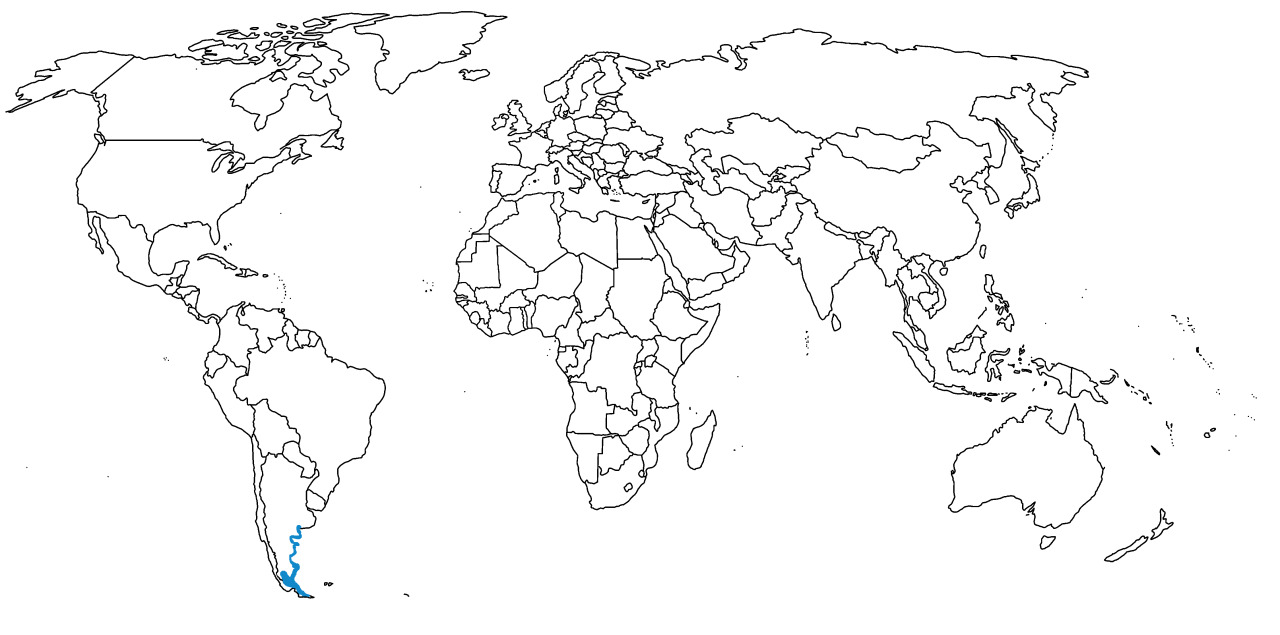
By Francesco Veronesi, CC BY-SA 2.0
Etymology: Little Plover-Like
First Described By: Gray, 1846
Classification: Dinosauromorpha, Dinosauriformes, Dracohors, Dinosauria, Saurischia, Eusaurischia, Theropoda, Neotheropoda, Averostra, Tetanurae, Orionides, Avetheropoda, Coelurosauria, Tyrannoraptora, Maniraptoromorpha, Maniraptoriformes, Maniraptora, Pennaraptora, Paraves, Eumaniraptora, Averaptora, Avialae, Euavialae, Avebrevicauda, Pygostaylia, Ornithothoraces, Euornithes, Ornithuromorpha, Ornithurae, Neornithes, Neognathae, Neoaves, Aequorlitornithes, Charadriiformes, Chionidi, Pluvianellidae
Status: Extant, Near Threatened
Time and Place: Within the last 10,000 years, in the Holocene of the Quaternary


The Magellanic Plover is known entirely from the southern tip of South America

Physical Description: The Magellanic Plover looks like other wading birds – it’s medium size, with an ovular body, round head, and long legs. Unlike other plovers, however, its legs are rather stocky, and not nearly as long; its feet and toes are also fairly thicker than in other groups. The Magellanic Plover reaches between 20 and 22 centimeters in length, and is grey on its brown, taupe on its neck, and white on its belly. It has red eyes and a dark grey-brown stripe from its eye to its beak. Its beak is also quite short. Finally, the Magellanic Plover has distinctive black undersides to its wing and tail feathers. Still, overall, it looks like true plovers.
Diet: This bird feeds on arthropods such as larvae and molluscs in the water, and it will look for food in the water, sand, and underneath rocks.
Behavior: The Magellanic Plover will scope out the rocks near the sea, turning over stones and other debris to find food, pecking around for it while hopping from rock to rock. They occasionally use their strong legs to dig through the sand for food, but this is rare. While feeding, they are either in small family groups during the breeding season, or small flocks outside of that season.

By Dominic Sherony, CC BY-SA 2.0
They begin laying eggs in September, continuing through November, usually near small streams. They defend a wide territory near the nest, which is made out of clay and pebbles and no plants, and is usually fairly exposed. They line their nests with gravel, and attempt multiple broods, though only one is usually successful. One to two eggs are laid, which are incubated for nearly a month by both parents. The chicks are mottled and dusky in color, and very fluffy and weak – they need help from both parents, and receive regurgitated food. They fledge a little after a month, but stick with their parents for a while.
The Magellanic Plover make coo and cew ing calls, but also whistled Weee-EEEE-ooo calls. This is helpful, as they do migrate between the southernmost part of the continent, back up to the Atlantic coast of Argentina, from breeding to non-breeding season. Still, at least some populations remain in one area for most of their lives.
Ecosystem: The Magellanic Plover mainly lives in rocky habitats near the shore, moving to more highland habitats near rivers and lakes during the breeding season, though they can be found on sandy coasts as well.
Other: Interestingly enough, the Magellanic Plover – despite looking like an extra robust regular plover – isn’t particularly closely related to plovers at all, and is in fact one of the most unique members of the wading-birds group, in its own clade separate from everyone else. Their closest living relatives? The Antarctic Sheathbills, another fairly unique group. Convergent Evolution at its finest! This bird is near threatened due to a small population.
~ By Meig Dickson
Sources
Jobling, J. A. 2010. The Helm Dictionary of Scientific Bird Names. Christopher Helm Publishing, A&C Black Publishers Ltd, London.
Wiersma, P. & Kirwan, G.M. (2019). Magellanic Plover (Pluvianellus socialis). In: del Hoyo, J., Elliott, A., Sargatal, J., Christie, D.A. & de Juana, E. (eds.). Handbook of the Birds of the World Alive. Lynx Edicions, Barcelona.
